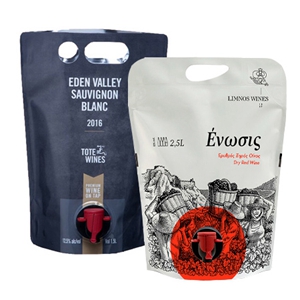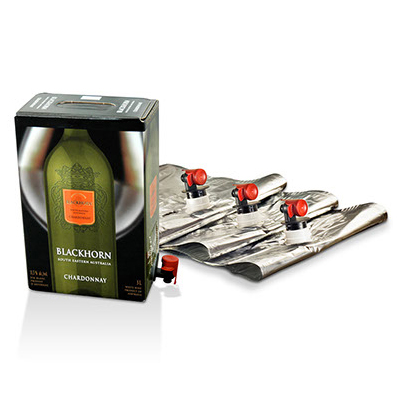Introdução
Vinho e sofisticação muitas vezes andam de mãos dadas, assim como a embalagem que contém esta bebida milenar. Embora as garrafas de vidro e as rolhas sejam há muito tempo a escolha tradicional, está a surgir uma nova tendência: as bolsas para vinho. Poderia esta inovação moderna ser o futuro das embalagens de vinhos finos?

O que é uma bolsa de vinho?
Elementos de design
Uma bolsa de vinho normalmente consiste em um material resistente e flexível projetado para reter líquidos. Muitas vezes vem com um bico ou torneira para servir facilmente, permitindo que os consumidores desfrutem do vinho sem abrir uma garrafa inteira.
Escolhas de materiais
As bolsas para vinho são geralmente feitas de múltiplas camadas de plástico, papel alumínio e outros materiais para proteger o vinho da luz, oxigênio e odores externos, que podem afetar sua qualidade.

Vantagens das bolsas de vinho
Portabilidade
Um dos benefícios mais significativos das bolsas de vinho é a sua portabilidade. São mais fáceis de transportar e menos frágeis do que as garrafas de vidro tradicionais, tornando-as ideais para piqueniques, eventos ao ar livre ou até mesmo para uma noite casual em casa.
Preservação
Wine pouches often come with a vacuum-sealed tap, allowing you to pour a glass without exposing the remaining wine to air. This feature prolongs the wine’s lifespan after opening.
Pegada de carbono reduzida
As bolsas de vinho pesam menos que as garrafas de vidro, resultando em custos de transporte mais baixos e numa pegada de carbono reduzida.

Tipos de vinho adequados para embalagem em bolsa
Vinho tinto
As fortes propriedades de barreira dos materiais da bolsa ajudam a preservar os perfis de sabor e taninos dos vinhos tintos.
Vinho branco
Pouches can protect white wines from light exposure, making them a suitable choice for preserving their delicate flavors.
Rosé and Sparkling Wine
While less common, even rosé and sparkling wines are making their way into pouch packaging.
Consumer Perception
Quality Concerns
Some consumers question whether wine pouches can offer the same quality experience as traditional glass bottles.
Apelo Estético
Packaging design, including the look and feel of the pouch, plays a significant role in attracting the modern wine consumer.
Production Considerations
Filling Process
Specialized machinery is required to fill and seal wine pouches, especially when they come with a tap or spout.
Cost Factors
Though the initial investment can be high, the reduced cost of materials and transportation often leads to long-term savings.
Sustentabilidade e impacto ambiental
Material Use
Innovations are continually emerging to make wine pouches from more sustainable materials, such as bioplastics.
Reciclabalidade
While traditional pouches can be challenging to recycle, efforts are underway to develop fully recyclable or compostable options.
Legal and Regulatory Hurdles
Alcohol Content Labeling
Legal requirements mandate specific labeling of the alcohol content, which varies from country to country.
Quality Assurance
Quality control measures must be rigorous to ensure that the wine maintains its integrity throughout its shelf life.
Estudos de caso
Success Stories
Some wineries have successfully shifted a portion of their product line to pouch packaging, gaining a new demographic of customers.
Challenges Faced
Transitioning to pouch packaging is not without its hurdles, including consumer perception and regulatory challenges.
Market Trends and Future Projections
Sales Data
The wine pouch market is steadily growing, especially among millennials and Gen Z consumers who prioritize convenience and sustainability.
Emerging Technologies
New materials and sealing technologies are continually being developed, promising a brighter future for wine pouches.
Conclusão
The wine pouch is a disruptive innovation that challenges traditional notions of what wine packaging should be. Its benefits in terms of portability, preservation, and reduced environmental impact make it a compelling choice for both consumers and producers. While challenges exist, especially in terms of consumer perception and recyclability, ongoing innovations are likely to propel wine pouches into mainstream acceptance.
perguntas frequentes
- Are wine pouches a fad or the future?
- They are increasingly being recognized as a sustainable, convenient alternative to traditional wine bottles.
- Do wine pouches affect the taste of wine?
- When made with high-quality materials and sealed properly, they do not compromise the wine’s quality.
- Are wine pouches eco-friendly?
- They have a lower carbon footprint than glass bottles, but recyclability remains a concern.
- What types of wine can be packaged in pouches?
- Red, white, rosé, and even sparkling wines are suitable for pouch packaging.
- How long can wine last in a pouch?
- The vacuum-sealed tap can extend the wine’s lifespan after opening, often up to a month or more.
So, are you ready to raise a pouch to the future of wine packaging? With its myriad benefits and ever-evolving technology, the wine pouch is well on its way to becoming a staple in the world of fine wines. Cheers to innovation!